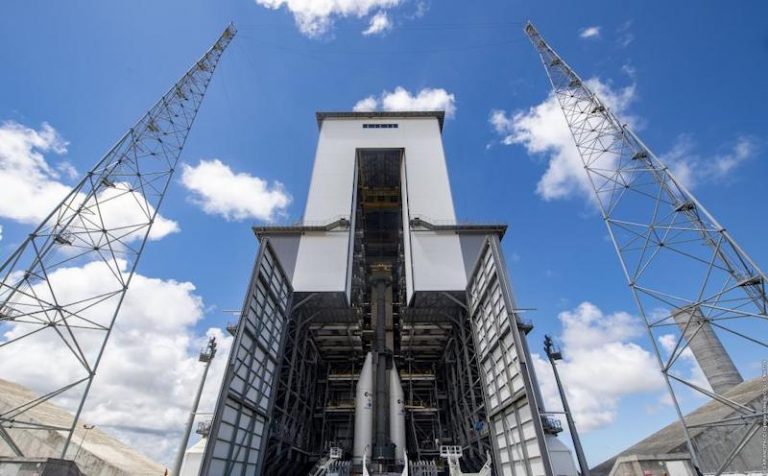
The Centre national d’études spatiales (CNES) and Clemessy are currently working together to develop a fluidic systems simulator, using artificial neural networks. At the heart of their partnership is an objective: to optimise the filling of rocket tanks using artificial intelligence.
To get a rocket off the ground, you have to start by filling its tanks with liquid hydrogen (LH2), a fuel with two-phase behaviour that is highly unstable and difficult to model. CNES, which excels in particular in complex mathematical modelling with the aim of better controlling this critical filling phase, has chosen to consider AI to obtain better results.
“The principle is very simple. Rather than spending time mathematically modelling the filling of the first stage of a rocket with LH2, we feed the data acquired by the experiment (Ariane 5 and open data) to a neural network. The output is a simulator that allows us to validate the process without having to use real equipment or develop heavy mathematical models,” explains Benjamin Lamy, head of IT and control engineering for Eiffage Énergie Systèmes-Clemessy.
AI uses past data to better “predict” future data. It also enables the behaviour of the fluid process (ground and launcher) to be simulated in real time. The demonstrator, developed in collaboration with CNES, is promising and could be used on future launchers (Callisto and Themis) during the development phase, for validation of the application software and during predictive maintenance. This IT demonstrator, which can be used intuitively, is a first step for the CNES and Clemessy teams, which will help to improve the challenge of competitiveness at European level in the space and critical industries.
“Beyond the work in partnership with the prestigious CNES Launchers Directorate, the challenge of AI applied to the needs of industry is to increase our ability to make sense of information, where conventional algorithms require too much time and resources. In the future, when we want to test a complex system, we will almost exclusively use IT resources,” emphasizes Benjamin Lamy.
Neural networks and AI are now used in industry on a daily basis, and concrete uses are multiplying: classification of shapes in the automotive industry, counting heavy goods vehicles at the entrances and exits of motorway service areas (to inform them of the number of places available), counting users of a railway station in real time (to determine the intensity of the heating to be provided), etc.
More and more industrial customers are also using AI to better predict their energy consumption. The fields of application of AI are vast and the process is beginning to bear fruit as a new offering from EIFFAGE.
ESA/CNES/Arianespace/CSG video – S. Martin
Translated from Le CNES et Clemessy développent un simulateur de systèmes fluidiques à l’aide de réseaux de neurones artificiels









